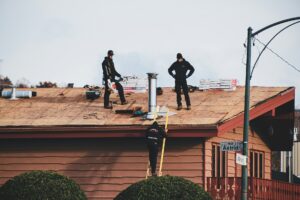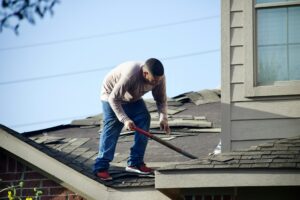Homeowners often wonder if their roof truly needs replacing, bracing themselves for the associated expenses. By 2025, evolving material costs, labor market trends, and innovative roofing technology will continue to influence the final price tag. Yet uncertainty doesn’t have to breed anxiety. Understanding the upcoming shifts and preparing accordingly can empower you to make more informed decisions and feel confident about safeguarding your home.
Below, we explore key driving factors behind roof replacement costs in 2025, including average price ranges, advanced materials, labor considerations, and practical budgeting tips for homeowners aiming to protect and enhance their properties. Whether you’re seeking the most cost-effective route or looking to make a savvy investment in your home’s longevity, the insights here will help you approach your roofing project with clarity and purpose.
Evolving Factors Driving Costs
Anticipating how the cost of a new roof will shift in 2025 involves examining the dynamic forces that shape pricing. Like a living ecosystem, roofing markets respond adaptively to supply, demand, technology, and regulation changes. When we understand these influences, we see that the price to replace a roof is not stagnant—it moves, like flowing water, according to the interactions of multiple layers.
Material Innovation and Availability
Advancements in roofing materials mean homeowners will have more options than ever before. Asphalt shingles, metal, and tile remain popular, but an emerging wave of eco-friendly materials and specialized coatings is bringing fresh possibilities. As these new materials become more widely produced, some may become more affordable, altering the range of acceptable budgets.
Yet, supply and demand can still cause fluctuations. If there’s a surge in popularity for a particular sustainable material, prices may trend upward, at least in the short term. Also, extreme weather patterns could disrupt supply lines, making traditional materials scarcer. That interplay between innovation and availability often creates cost swings that are best addressed by researching multiple material options before deciding.
Labor Market Shifts
Hardworking roofing professionals keep up with emerging safety protocols, advanced tools, and installation processes. However, an aging workforce and lower rates of entry-level labor may limit the pool of experienced roofers. That can drive up the labor cost in some regions, especially if demand for roof replacements escalates during peak seasons.
At the same time, technology could soften the impact of a smaller labor pool. Innovations like drone-assisted measurements and improved installation machines may lower labor hours for complex roofing jobs. But these tools often carry an upfront investment for contractors, which can trickle down into homeowner costs. Recognizing how labor trends affect quotes prevents sticker shock and empowers you to select the right company for your home’s needs.
Energy-Efficiency Requirements
An increasing focus on energy-efficient, eco-friendly homes extends to roofing. Certain states or municipalities require cool-roof technology or sustainable materials. Future regulations could force roofers to incorporate additional measures like specialized insulation or reflective coatings. Building codes may also mandate better ventilation practices or weather-proofing standards.
While these regulations potentially increase the upfront price, they can yield considerable savings on heating and cooling costs for homeowners. Over time, you may also boost your home’s resale value with an environmentally-conscious roof. Evaluating whether your region has upcoming legislation related to roof standards can inform budget projections and help you tap into potential incentives or rebates.
Technological Advancements
By 2025, roofing technology will likely be more integrated, offering homeowners fresh possibilities. Solar roofing shingles are a prime example, combining functionality, aesthetics, and green energy into one package. These advanced options often cost more initially but generate returns in the long run by lowering electric bills and potentially earning energy credits.
Additionally, advanced weatherizing materials that better protect against storms or fires might become industry standard. For neighborhoods prone to hurricanes, tornadoes, or wildfires, having a specialized roof can minimize both insurance costs and emotional stress. Although the initial expenditure could be higher, factoring in reduced maintenance and insurance benefits can offset those expenses in the longer term.
Typical Roof Replacement Costs
While every home is unique, it’s helpful to consider a general price range for budgeting. In 2025, you might expect a new roof for a typical single-family home to cost anywhere from $7,000 to $20,000, depending on the material, roof size and complexity, and local labor fees. That broad range reflects how roofing projects can vary significantly, even within the same neighborhood.
Here’s a rough breakdown of costs by material type, acknowledging potential fluctuations:
- Asphalt Shingles: $3 to $6 per square foot
- Metal Roofing: $6 to $12 per square foot
- Wood Shakes: $7 to $13 per square foot
- Clay or Concrete Tiles: $8 to $15+ per square foot
- Slate Roofing: $10 to $20+ per square foot
- Solar Shingles: $15 to $25+ per square foot
Keep in mind these figures are approximate averages and will likely shift by your location and the brand or supplier. Additional costs such as roof removal, disposal fees, and structural repairs can expand any quote quickly.
Key Cost Variables to Monitor
Though the above estimates are a solid starting point, the final cost often depends on site-specific considerations. By investigating the following variables, homeowners can get a transparent sense of project scope before obtaining bids.
Roof Complexity and Pitch
Steep or irregularly shaped roofs require extra caution, specialized equipment, and more labor hours. Additional stories or dormers also complicate the process, as do architectural elements like skylights or chimneys. When you request a roof replacement estimate, ensure the contractor makes an on-site visit to assess these unique features.
Underlayment and Decking Condition
Your underlayment—the barrier between the shingles and your home’s structural decking—plays a crucial role in protecting against moisture and wind. If your underlayment is worn, upgrading to a high-quality, long-lasting layer can boost the roof’s overall performance. Additionally, any rotted or damaged decking must be replaced, raising both material and labor costs. A thorough inspection can spare you unpleasant surprises once your old roof is removed.
Roof Accessories and Customizations
Ventilation systems, gutters, flashing, and ridge vents round out a complete roofing system. Upgrading or replacing these components can add to the final bill, but they often pay dividends by helping the roof last longer. You might also consider specialized features such as built-in drainage systems or custom metalwork. If your home has unique architecture, it’s wise to tailor these accessories to preserve both form and function.
Local Climate and Building Codes
Properties in harsh climates may need enhanced protective solutions. Codes in these areas can mandate more substantial materials to manage high winds, heavy snowfall, or salt in coastal environments. Meanwhile, local ordinances might regulate everything from the roofing color to how debris is disposed of. Aligning with these guidelines isn’t optional, so keep the potential costs in mind when planning any roof replacement.
Budgeting for a New Roof
Approaching your roofing project with clarity begins by setting a realistic budget. It’s natural to want a near-instant decision, but patience and proper planning can save you headaches and costs later on. Think of budgeting as an organic process that unfolds over time, letting you gather quotes, fine-tune expectations, and tap into financing sources if needed.
Saving Strategically in Advance
If you foresee a roof replacement in 2025, start a dedicated savings account now. Contribute small amounts regularly, allowing you to accumulate a healthy reserve for a future project. This approach reduces the need to scramble for emergency funds and positions you to handle unexpected surprises with less stress.
Comparing Multiple Quotes
Reaching out to at least three reputable contractors helps you gauge fair market pricing. Be clear about the job requirements—like preferred materials, roof dimensions, and any custom features—so each quote maintains consistent parameters. While the cheapest option might appear tempting, consider the contractor’s reputation, warranties, and communication style to ensure a safe and high-quality outcome.
Looking for Incentives
Local municipalities or energy companies may incentivize eco-friendly upgrades, such as cool roofs or solar integration. Credits or rebates can trim costs or speed up your return on investment. Explore resources like the Database of State Incentives for Renewables & Efficiency (DSIRE) or check with your local government to see if roofing improvements qualify for any incentives.
Evaluating Financing Options
Not all homeowners want or are able to pay with savings alone. Financing choices continue to expand in ways that can make roofing investments more accessible. Some homeowners tap into home equity lines of credit (HELOCs), while others may consider specialized roof loans. If you have a strong relationship with a local bank, inquire about small construction loans. Evaluating different funding avenues helps you tailor an approach that best fits your financial context.
Tips for Navigating Quotes and Contractors
Selecting a roofing professional who balances quality and affordability requires both discernment and open communication. Stay proactive throughout the bidding process, asking thoughtful questions that deepen your understanding and confirm you’ve found the right match.
- Verify Credentials
Look for contractors with valid licenses, insurance, and training certifications. Roofing companies who regularly invest in staff development and continuing education demonstrate commitment to excellence. Check your state’s licensing website or a trusted referral network to confirm you’re working with reputable professionals. - Ask About Warranties
Reputable roofing companies typically stand behind their installations with robust labor warranties. Request clarity on potential manufacturer warranties, as well. For instance, certain high-end shingles might come with extended coverage if installed under specific guidelines. Understanding these protections ensures peace of mind should any unforeseen issues arise. - Inspect Past Work
Looking at a contractor’s portfolio or driving by a completed project can help illustrate their craftsmanship. Seek online reviews or direct customer testimonials, noting overall satisfaction and how well the contractor addressed any problems that emerged. Speak candidly about timelines, communication, and final outcomes to gauge what your own experience might be. - Clarify the Payment Schedule
Carefully review how and when payments are due. Some contractors require a deposit, followed by incremental payments tied to project milestones. This approach can help you stay on budget while giving the contractor confidence in your commitment. But exercise caution if asked for a substantial payment upfront, or if the schedule seems hastily defined. - Emphasize Clear Communication
Effective roofing projects hinge on consistent, clear dialogue. Talk to your contractor about your concerns and objectives, as well as any local regulations or unique features of your property. Open communication also includes confirming how any disputes or changes will be handled, ensuring you have a procedure for unexpected twists during the job.
Planning for Future Maintenance
A newly installed roof isn’t the end of the story. Instead, it’s the start of the next chapter in your home’s evolution. Investing in preventative maintenance helps you maximize your roof’s lifespan, shielding you from more frequent replacements and unplanned costs down the road.
- Perform Seasonal Inspections: Each spring and fall, check for loose shingles, damaged flashing, or thick debris accumulations. Regularly cleaning gutters and downspouts helps guide water off the roof, protecting internal structures.
- Address Minor Repairs Quickly: Small issues, like cracked shingles or localized leaks, can become significant if ignored. Simple spot repairs extend the overall roof life and let you sidestep expensive overhauls later.
- Keep Records: Track every inspection and repair. This documentation creates a clear roadmap of your roof’s history, proving invaluable if you decide to sell your home or need to process a warranty claim.
Future Outlook and Practical Action
Roofing is a fundamental element of constructing safe, comfortable homes. As we approach 2025, the industry’s focus will continue to move toward specialization, eco-consciousness, smart technology integration, and durable solutions. Understanding shifts in materials, labor, and codes helps you see the bigger narrative—one where roofing actively evolves with emerging standards and homeowner expectations.
By thinking proactively about your roof’s future, you can approach replacement with a calm, prepared mindset. Budgeting effectively, finding the right contractor, and choosing the most suitable materials for your home’s environment all contribute to this holistic strategy. The result is more than just a stable shelter overhead: it’s an investment in your home’s longevity, energy efficiency, and resale value.
Reading about broader trends might also spark ideas about solar integration or advanced coatings. For deeper insight into how sustainable roofing can lower bills and raise property values, consider exploring resources like the Environmental Protection Agency’s Energy Star program, which provides data on energy savings and product certifications.
Embracing Roofing as Long-Term Stewardship
Your roof is a dynamic, protective asset—an umbrella that defends your family and possessions from unpredictable weather and the test of time. When thoughtfully selected and installed, it offers more than shelter; it provides opportunities for energy savings, enhanced property values, and peace of mind. By viewing your roof as an interwoven part of your home’s future, you’ll naturally seek solutions that work harmoniously with your environmental and financial goals.
As 2025 approaches, armed with a clear understanding of evolving costs, factors driving those expenses, and actionable steps to budget effectively, you’ll be well-prepared for whatever roofing challenges arise. This balanced, forward-thinking approach helps ensure you get the best possible return on your investment, protecting both your home’s interior and your wallet for years to come.
Allow these lessons to shape a steady, confident path forward. With the knowledge that every roof is part of a living chain of improvements, you’ll be ready to embrace new technologies and adapt to shifting market forces. The decisions you make now will ripple into the future, ensuring your home remains a safe haven and a testament to wise ownership.




